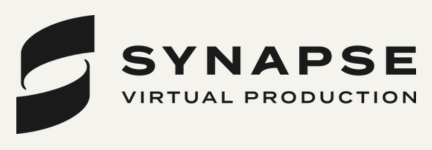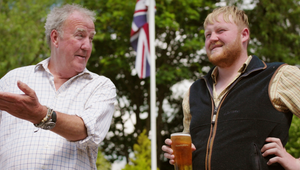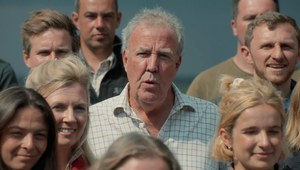
CHI&Partners’ Jonathan Burley on Shaking Up the Creative Department

In February this year, CHI&Partners
did something ad traditionalists might consider sacrilege. They broke up the
bedrock of the creative department, the art director & copywriter team, and
replaced it with a new, more fluid way of working. The announcement of this
procedural shake-up coincides with a raft of new hires, including Ogilvy & Mather’s Laura Rogers and Leo
Burnett’s Marc Donaldson.
It sounds like a big, dramatic move but
getting there has been a long and organic process. It was borne out of informal
‘Breakfast Clubs’, in which the agency’s senior creative directors would get
together during ‘times of crisis’ to share the projects they were working on
and pick each others’ brains. That gradually expanded and more junior creatives
were brought in – and they found the experience energising.
“That was even more fun,” says CCO
Jonathan Burley, “because young creatives don’t have that baggage that us
wrinkly old people have. Their ambition is much greater.”
“I’ve been doing this for 24 years, 25
years now and traditional ways of working often result in frustration, or you
get a bit tired of them. This felt very fresh and fun. Young creatives were
gathering together and sharing their ideas in quite a generous way.”
Last summer, the ‘Breakfast Clubs’
produced some significant pieces of work and Jonathan decided to formalise this
more fluid and collaborative way of running the creative department. Since
then, over the past year the agency has been carefully figuring out what shape
this new structure would take, what processes would underpin it – and how to
make sure that it would be fair and inspiring for the creatives.
Getting there was a long and difficult
process and Jonathan worked closely with Creative Services Director John Hodges
to hammer out a fluid, manageable process. “You can imagine the complexity of
the process that would allow you to have a dispirit group of creatives all
working on different briefs. That was the hard bit, to be honest. Getting
everyone together and coming up with ideas was easy… the hardest bit was
defining a rigorous process. I’m a strong believer in process for doing the
work because otherwise it descends into chaos. So this could appear to be a
chaotic way of working but it’s not.”
So what does that process look like? Any
one project has three creatives and one creative director working in a gang or
‘Breakfast Club’ (that nickname has stuck). The creative director gets involved
in the ideas generation stage, rather than remaining distant from that, while
one of the creatives will be designated as the ‘maker’, overseeing script
writing and production. “You can manage that because one person can probably
only make one thing at a time. But they can also be part of Breakfast Clubs on
other projects because they’re only two hours at a time. You can manage their
time and career because they’re only making one thing but they’re generating
ideas on up to four other things.”
The response from the creatives and
creative directors has, so far, been positive. Jonathan says that there’s been
a noticeable change in the department’s energy levels and that it’s fostered a
more supportive and sharing way of working. Stresses and pressures are also
shared more easily.
But what about the creative directors
who have been pulled closer to the heart of the creative process?
“I think they enjoy it,” says Jonathan.
“There’s that thing that you can have as a creative director where you brief
the team to come up with something and they’ll wander off for a couple of weeks
and they’ll come back with a bundle of work that they’ve put a tremendous
amount of work into but it’s not quite what you were looking for, or it’s off-brief.
This allows you to be there in the heart of it instead of having these gaps
between briefing the teams and seeing the work. It’s a really healthy way of
working.”
It’s also opened up the way Jonathan is
able to bring on new talent to the department. It’s allowed him to look more
carefully at the skills gap in the department. While he’s taken on some
creative teams recently, they’ve been teams who are willing to split up and mix
around with other people, knowing that they will reunite on projects throughout
the year.
“It’s allowed me to have quite a
‘renaissance’ department. I can hire designers, young people with backgrounds
in digital and fashion and photography. Suddenly they have a very different
aesthetic and view on marketing. My plan is to bring people from wildly
different backgrounds into the mix,” says Jonathan.
Agencies often bring ‘outsiders’ into
creative departments, but when everyone else is bedded down in a pair they can
find it difficult to find their way. The new, fluid way of working at
CHI&Partners, says Jonathan, will make it easier for these new kinds of
creatives to settle in.
“All of us have heard apocryphal stories
where agencies have gone, ‘we’re going to get an ex-editor from NME to come in
and write for us or some guy who puts on musical theatre and they’re going to
make a huge difference’,” says Jonathan. “The problem is they really struggle
to fit in because of the process. If you’re just a duo you can’t help but
gather together and huddle round each other and not allow a stranger into the
midst. Whereas if the way you work is about constantly working with new people,
then someone new from a wildly different background becomes exciting.”
As energising as the new process has
been, Jonathan is keenly aware that it might not be appropriate for all
agencies and all creatives. He’s also not keen to be a spokesperson for the
entire industry on the matter. He does, however, have his own personal
suspicions.
“My personal belief is that the industry
is constantly evolving, we have to be a bit more open-minded about the way we
work. Whether it’s this way or totally different ways of working, I have no
idea. It feels that some agencies are quicker at adapting to that than others.
We’re a profoundly shifting industry at the moment and it feels, for me,
implausible that we’ll maintain the set structures in the coming decades as we move
forward to different channels and ways of working. But I can’t speak for other
agencies and what they’ll do.”
For now though, Jonathan is
concentrating on the next steps. He’s sure that there will be some tinkering
and small organic changes along the way, but the next big thing is to re-work
the physical layout of the creative department, building in quiet spaces and
places for the Breakfast Clubs to meet and collaborate.















